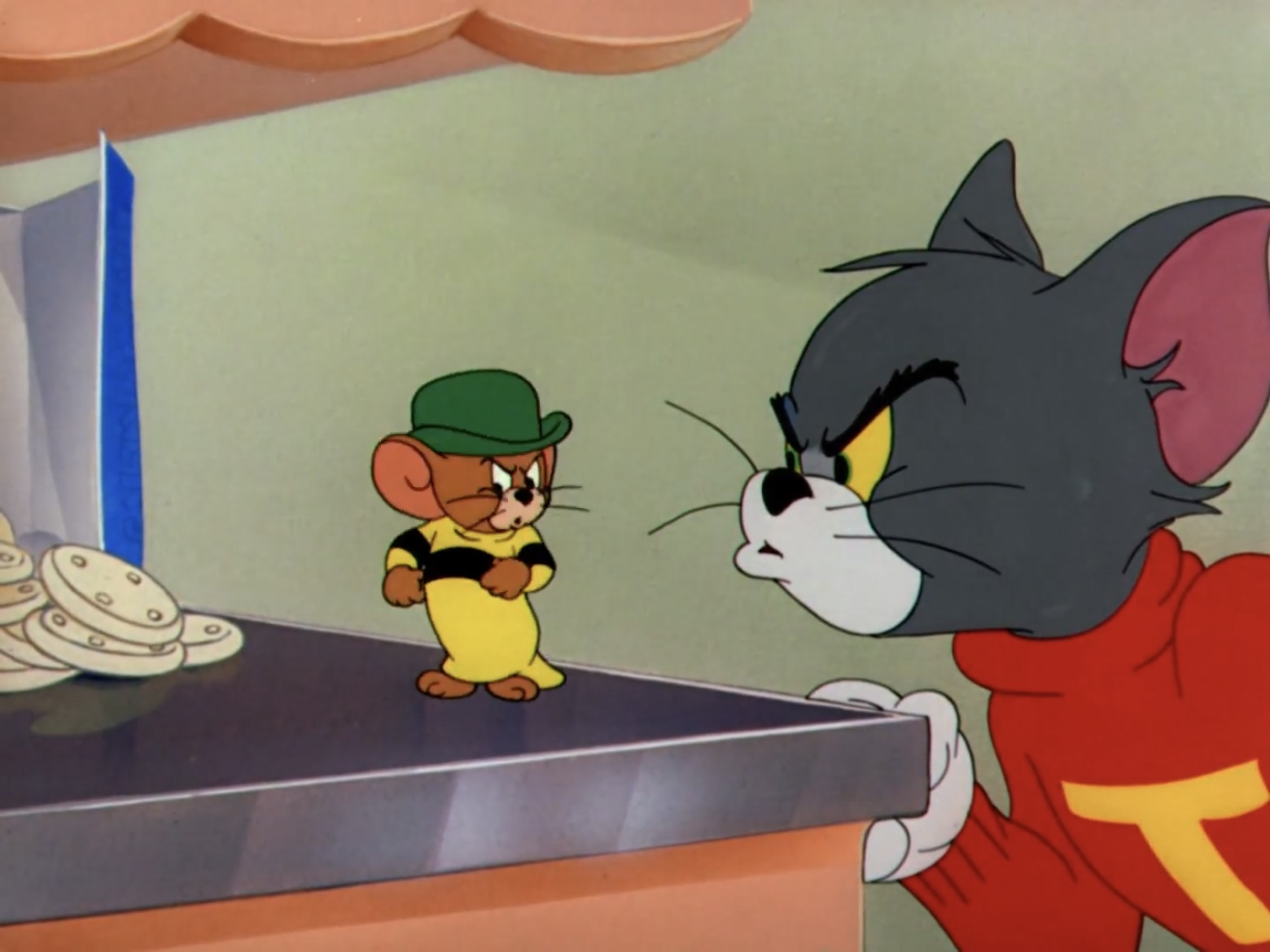
Like pervious shorts in this series, this film pits Tom up against an opponent for capturing Jerry. However, unlike those previous shorts, Tom's opponent here is not another cat but an eagle. Like Tom this eagle is also interested in eating Jerry. As this film starts Tom captures Jerry between two slices of bread. However, before he can eat the mouse, an eagle swoops down and steals Tom's mouse sandwich. This causes a big fight between Tom and the Eagle over Jerry. Eventually though Tom comes upon the idea to disguise himself as a female eagle to capture Jerry back. However, the eagle gets too excited by this, and it causes Tom more trouble than he expected.
This film often tends to get overlooked among many other Tom and Jerry cartoons of this time period. In a way this is understandable because during this period the Tom and Jerry series was turning out gem after gem. If this cartoon does not measure up to the others of this time period, that is only a testament to how great the other films of this period are. This may not be the best Tom and Jerry cartoon of this period but it is a perfectly solid film. This film has some very good gags. It may not be great gag after great gag, the way the best Tom and Jerry shorts are but the great gags are fantastic. The best of which include the eagle trying to kiss Tom. He misses and completely destroys what he ends up kissing with the strength of his beak. These gags are very over the top, yet they are done in a completely unassuming manner (there are no big takes or even characters reacting to these gags) and that just makes them all the funnier. This film also moves by at a very fast speed that keeps the comic momentum going through the full cartoon and never lets up. This makes it a cartoon that is hard not to enjoy. The eagle is also a very fun character and a perfect foil to Tom. The mixture of viciousness and goofiness is simply wonderful and a lot of fun.
The eagle would later appear in an episode of TV's Tom and Jerry Tales called Bend It Like Thomas (2007). He would also be an unlockable character in the 2003 video game, Tom and Jerry in War of the Whiskers. This film would essentially be remade as an episode of TV's Tom and Jerry Kids entitled Hawkeye Tom (1993).
The credited animators on this film would be Irven Spence, Kenneth Muse and Ray Patterson, all of whom had worked on previous Tom and Jerry cartoons.
Below are some posters for the cartoon when it originally came to movie theaters. Notice how on the first one, the eagle and Tom have switched their color schemes.








